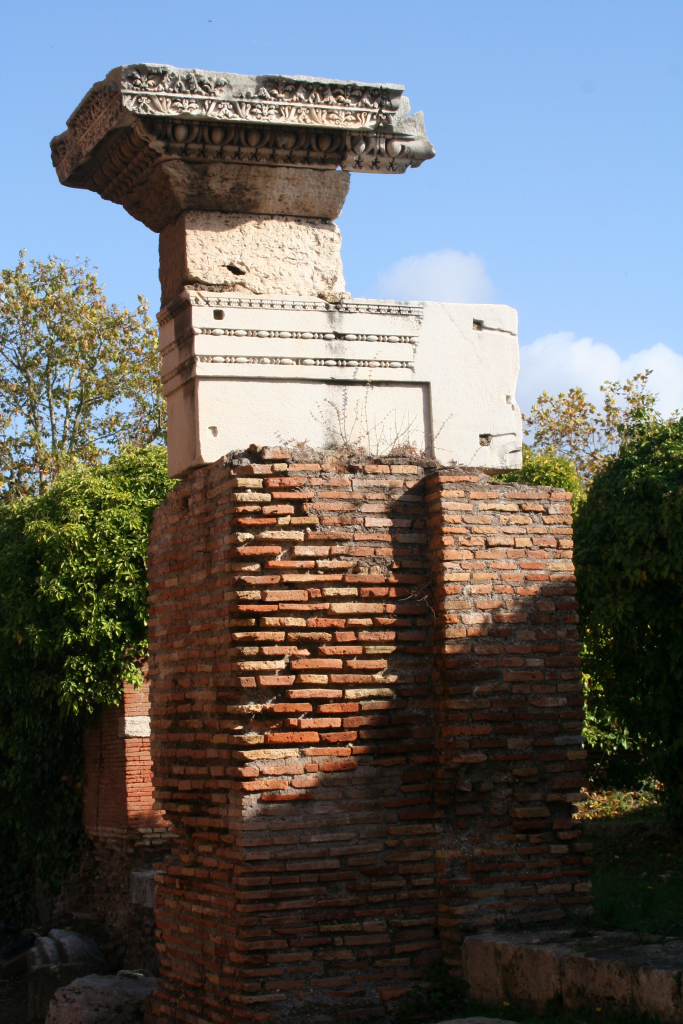|
The remains of the honorary arch of Caracalla can be seen to the south of the theatre (II,VII,2), to the north of the Porticus of the Triumphal Arches (V,XI,7), which was named after the arch. The four corner piers of the arch flank the central entrance of the theatre (opus vittatum and opus latericium). Therefore the arch was also some sort of covered vestibule of the theatre. The piers are fairly small (the size ranges from 0.92 x 1.35 to 1.09 x 1.60 m.). The north-south distance between the piers (that is, the width of the Decumanus) is c. 5.85 m. The west-east distance (along the theatre) is c. 13.65. Fragments have been found of the marble decoration: columns, architraves, friezes, and cornices. In the area to the south of the theatre fragments were found of a huge marble inscription (c. 6.30 x 1.80 m.), coming from the attic of the arch. It will have been fastened in the upper east side, so that it was seen by those who came from Rome and entered the city through the Porta Romana. The letters may have been coloured. The following text has been proposed:
It is a dedication to Caracalla from late 215 or 216 AD, probably by the "senate and people" of Ostia. Note that Caracalla, together with his father, was responsible for the rebuilding of the theatre. Nothing has been preserved of the word magno, but it is a likely addition. At the end of his reign Caracalla identified himself with Alexander the Great ("Magnus"). The year before, this identification had been expressed through paintings in the Shrine of Silvanus (I,III,2). The phrase ac super omnes, "and above all", elevates the Emperor above all his predecessors. The arch is mentioned in ancient literature in connection with the martyrdom of Cyriacus, which led to the building of the Christian Oratory (II,VII,1). |
 Plan of the arch. North is to the right. After Zevi-Pensabene 1971, fig. 2.  Reconstruction drawing of the arch. From the east. From Zevi-Pensabene 1971, fig. 3. |
